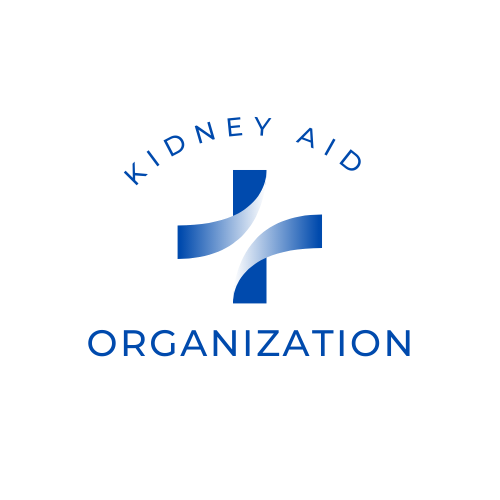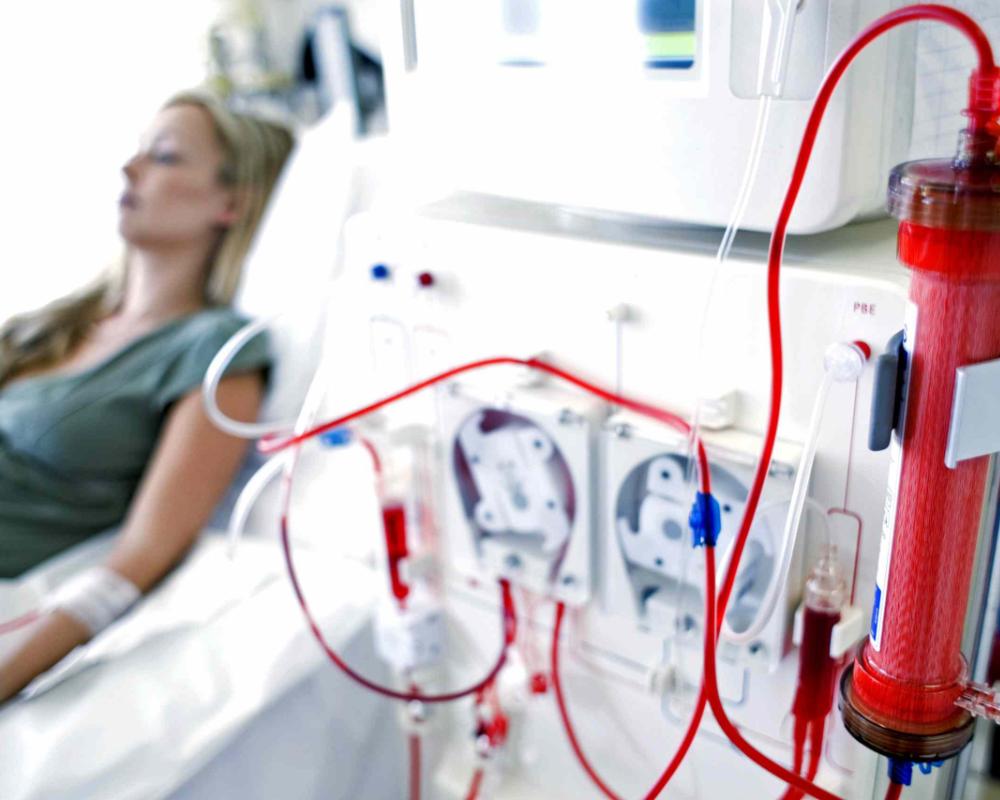Chronic kidney disease (CKD) is a prevalent condition affecting millions worldwide, with Stage 3 CKD being a critical juncture in its progression. At this stage, kidney function is significantly impaired, requiring meticulous management to slow down further decline and mitigate complications.
Medication plays a crucial role in the treatment regimen for Stage 3 CKD, aiming to address various underlying issues such as hypertension, proteinuria, and electrolyte imbalances.
Understanding the medications used at this stage is vital for patients and healthcare providers alike to optimize outcomes and improve quality of life. In Stage 3 Chronic Kidney Disease (CKD), the primary goals of medication management are to control blood pressure, reduce proteinuria (excess protein in the urine), manage complications such as anemia and mineral imbalances, and slow down the progression of kidney damage. Here are some commonly prescribed medications for CKD Stage 3:
1. Angiotensin-Converting Enzyme (ACE) Inhibitors and Angiotensin II Receptor Blockers (ARBs):
Regular monitoring by healthcare providers is crucial to adjust medication dosages, address side effects, and optimize treatment outcomes. Additionally, lifestyle modifications such as a healthy diet, regular exercise, and smoking cessation play a vital role in managing CKD and should complement pharmacotherapy.
Additionally, they have demonstrated renoprotective effects by decreasing proteinuria and slowing down the decline in kidney function. Studies have shown that ACE inhibitors and ARBs can delay the progression of CKD to end-stage renal disease (ESRD) and reduce the risk of cardiovascular events in this patient population. A landmark study published in the New England Journal of Medicine demonstrated the efficacy of ACE inhibitors in slowing the progression of CKD.
The "Ramipril Efficacy In Nephropathy" (REIN) trial showed a significant reduction in the risk of renal events, such as doubling of serum creatinine or progression to ESRD, in patients with CKD treated with ramipril compared to those receiving a placebo. Similarly, ARBs have been extensively studied in CKD populations, with medications like losartan and valsartan showing significant benefits in preserving kidney function and reducing proteinuria.
However, it is crucial to note that ACE inhibitors and ARBs may not be suitable for all patients, particularly those with hyperkalemia or bilateral renal artery stenosis. Close monitoring of renal function and electrolyte levels is essential when initiating or adjusting these medications in patients with Stage 3 CKD.
Addressing Proteinuria: ACE Inhibitors, ARBs, and Other Agents
Proteinuria, the presence of excess protein in the urine, is a hallmark of kidney damage and a prognostic marker for progressive CKD. In addition to their antihypertensive effects, ACE inhibitors and ARBs have demonstrated significant proteinuria-reducing properties, making them valuable therapeutic options in patients with Stage 3 CKD.
By inhibiting the renin-angiotensin-aldosterone system (RAAS), these medications help mitigate glomerular damage and decrease protein leakage into the urine. However, some patients may experience incomplete proteinuria reduction or develop adverse effects such as hyperkalemia, requiring alternative approaches for proteinuria management. Combination therapy with ACE inhibitors and ARBs, known as dual RAAS blockade, has been investigated as a potential strategy to further reduce proteinuria and slow CKD progression.
However, studies such as the "Ongoing Telmisartan Alone and in Combination with Ramipril Global Endpoint Trial" (ONTARGET) have raised concerns about the increased risk of adverse events, including acute kidney injury and hyperkalemia, associated with dual RAAS blockade. As a result, this approach is generally not recommended in routine clinical practice. Instead, other agents such as direct renin inhibitors (e.g., aliskiren) and mineralocorticoid receptor antagonists (e.g., spironolactone) may be considered as adjunctive therapy in patients with persistent proteinuria despite ACE inhibitor or ARB treatment.
These agents offer additional benefits in reducing proteinuria and preserving kidney function, albeit with specific considerations for monitoring and adverse effects.
These medications have been shown to improve hemoglobin levels, reduce the need for blood transfusions, and alleviate symptoms of fatigue and dyspnea in CKD patients. However, ESA therapy carries certain risks, including the potential for thromboembolic events, hypertension, and pure red cell aplasia. As such, careful dosing and monitoring of hemoglobin levels are essential to avoid excessive increases and mitigate adverse effects. Additionally, iron deficiency often coexists with anemia in CKD patients, further complicating its management.
Oral or intravenous iron supplementation may be necessary to optimize response to ESA therapy and improve iron stores in patients with Stage 3 CKD. Recent studies have highlighted the importance of correcting iron deficiency early in the course of CKD to enhance the efficacy of ESA therapy and reduce the need for higher ESA doses, thus minimizing associated risks. In conclusion, medication management plays a crucial role in the comprehensive care of patients with Stage 3 CKD.
From controlling hypertension and reducing proteinuria to managing anemia and iron deficiency, pharmacotherapy aims to slow down disease progression, alleviate symptoms, and improve quality of life. ACE inhibitors and ARBs remain cornerstone agents in the treatment of hypertension and proteinuria, with additional options available for patients with specific needs or intolerances. By individualizing treatment regimens based on patient characteristics and monitoring for adverse effects, healthcare providers can optimize outcomes and enhance the long-term prognosis of individuals with Stage 3 CKD.
Understanding the medications used at this stage is vital for patients and healthcare providers alike to optimize outcomes and improve quality of life. In Stage 3 Chronic Kidney Disease (CKD), the primary goals of medication management are to control blood pressure, reduce proteinuria (excess protein in the urine), manage complications such as anemia and mineral imbalances, and slow down the progression of kidney damage. Here are some commonly prescribed medications for CKD Stage 3:
1. Angiotensin-Converting Enzyme (ACE) Inhibitors and Angiotensin II Receptor Blockers (ARBs):
- Examples: Enalapril, Lisinopril (ACE inhibitors); Losartan, Valsartan (ARBs).
- Purpose: These medications help control blood pressure and reduce proteinuria by blocking the renin-angiotensin-aldosterone system (RAAS), which plays a role in kidney damage.
- Benefits: Slows the progression of CKD, protects kidney function, and reduces the risk of cardiovascular events.
2. Diuretics:
- Examples: Furosemide, Hydrochlorothiazide.
- Purpose: Diuretics help remove excess fluid from the body, thereby reducing swelling (edema) and relieving symptoms of fluid overload.
- Benefits: Helps control blood pressure, reduces the workload on the kidneys, and manages fluid retention.
3. Erythropoiesis-Stimulating Agents (ESAs):
- Examples: Epoetin alfa, Darbepoetin alfa.
- Purpose: ESAs stimulate the production of red blood cells, addressing anemia commonly associated with CKD by improving hemoglobin levels and reducing symptoms like fatigue and shortness of breath.
- Benefits: Improves quality of life, reduces the need for blood transfusions, and may slow down the progression of kidney disease by optimizing oxygen delivery to tissues.
4. Phosphate Binders:
- Examples: Calcium-based binders (Calcium carbonate, Calcium acetate); Non-calcium-based binders (Sevelamer, Lanthanum carbonate).
- Purpose: Phosphate binders help control phosphorus levels in the blood by binding to dietary phosphorus in the gut, reducing its absorption.
- Benefits: Prevents complications associated with high phosphorus levels, such as bone disease and cardiovascular calcification.
5. Iron Supplements:
- Examples: Ferrous sulfate, Iron sucrose (intravenous).
- Purpose: Iron supplementation is often necessary to address iron deficiency anemia, a common complication of CKD. It helps optimize the response to ESA therapy and improve iron stores in the body.
- Benefits: Increases hemoglobin levels, reduces the need for higher ESA doses, and improves overall energy levels and well-being.
6. Vitamin D Analogs:
- Examples: Calcitriol, Paricalcitol.
- Purpose: Vitamin D analogs are used to manage mineral and bone disorders associated with CKD by regulating calcium and phosphorus metabolism and promoting bone health.
- Benefits: Helps prevent bone loss, fractures, and secondary hyperparathyroidism in CKD patients.
7. Statins:
- Examples: Atorvastatin, Rosuvastatin.
- Purpose: Statins are lipid-lowering medications that help control cholesterol levels and reduce the risk of cardiovascular events, which are elevated in CKD patients.
- Benefits: Protects against atherosclerosis, lowers the risk of heart disease, and may slow down the progression of CKD by reducing inflammation and oxidative stress.
Regular monitoring by healthcare providers is crucial to adjust medication dosages, address side effects, and optimize treatment outcomes. Additionally, lifestyle modifications such as a healthy diet, regular exercise, and smoking cessation play a vital role in managing CKD and should complement pharmacotherapy.
Managing Hypertension: ACE Inhibitors and ARBs
Hypertension is not only a common comorbidity but also a major contributor to the progression of kidney disease. Angiotensin-converting enzyme (ACE) inhibitors and angiotensin II receptor blockers (ARBs) stand out as cornerstone medications in managing hypertension in patients with Stage 3 CKD. These medications work by dilating blood vessels, reducing blood pressure, and minimizing stress on the kidneys.Additionally, they have demonstrated renoprotective effects by decreasing proteinuria and slowing down the decline in kidney function. Studies have shown that ACE inhibitors and ARBs can delay the progression of CKD to end-stage renal disease (ESRD) and reduce the risk of cardiovascular events in this patient population. A landmark study published in the New England Journal of Medicine demonstrated the efficacy of ACE inhibitors in slowing the progression of CKD.
The "Ramipril Efficacy In Nephropathy" (REIN) trial showed a significant reduction in the risk of renal events, such as doubling of serum creatinine or progression to ESRD, in patients with CKD treated with ramipril compared to those receiving a placebo. Similarly, ARBs have been extensively studied in CKD populations, with medications like losartan and valsartan showing significant benefits in preserving kidney function and reducing proteinuria.
However, it is crucial to note that ACE inhibitors and ARBs may not be suitable for all patients, particularly those with hyperkalemia or bilateral renal artery stenosis. Close monitoring of renal function and electrolyte levels is essential when initiating or adjusting these medications in patients with Stage 3 CKD.
Addressing Proteinuria: ACE Inhibitors, ARBs, and Other Agents
Proteinuria, the presence of excess protein in the urine, is a hallmark of kidney damage and a prognostic marker for progressive CKD. In addition to their antihypertensive effects, ACE inhibitors and ARBs have demonstrated significant proteinuria-reducing properties, making them valuable therapeutic options in patients with Stage 3 CKD.
By inhibiting the renin-angiotensin-aldosterone system (RAAS), these medications help mitigate glomerular damage and decrease protein leakage into the urine. However, some patients may experience incomplete proteinuria reduction or develop adverse effects such as hyperkalemia, requiring alternative approaches for proteinuria management. Combination therapy with ACE inhibitors and ARBs, known as dual RAAS blockade, has been investigated as a potential strategy to further reduce proteinuria and slow CKD progression.
However, studies such as the "Ongoing Telmisartan Alone and in Combination with Ramipril Global Endpoint Trial" (ONTARGET) have raised concerns about the increased risk of adverse events, including acute kidney injury and hyperkalemia, associated with dual RAAS blockade. As a result, this approach is generally not recommended in routine clinical practice. Instead, other agents such as direct renin inhibitors (e.g., aliskiren) and mineralocorticoid receptor antagonists (e.g., spironolactone) may be considered as adjunctive therapy in patients with persistent proteinuria despite ACE inhibitor or ARB treatment.
These agents offer additional benefits in reducing proteinuria and preserving kidney function, albeit with specific considerations for monitoring and adverse effects.
Managing Anemia and Iron Deficiency: ESA Therapy and Iron Supplementation
Anemia is a common complication of CKD, particularly in advanced stages, resulting from impaired erythropoietin production and decreased red blood cell lifespan. In Stage 3 CKD, anemia may not be as severe as in later stages but still warrants attention due to its impact on quality of life and cardiovascular health. Erythropoiesis-stimulating agents (ESAs), such as epoetin alfa and darbepoetin alfa, play a crucial role in managing anemia by stimulating red blood cell production in the bone marrow.These medications have been shown to improve hemoglobin levels, reduce the need for blood transfusions, and alleviate symptoms of fatigue and dyspnea in CKD patients. However, ESA therapy carries certain risks, including the potential for thromboembolic events, hypertension, and pure red cell aplasia. As such, careful dosing and monitoring of hemoglobin levels are essential to avoid excessive increases and mitigate adverse effects. Additionally, iron deficiency often coexists with anemia in CKD patients, further complicating its management.
Oral or intravenous iron supplementation may be necessary to optimize response to ESA therapy and improve iron stores in patients with Stage 3 CKD. Recent studies have highlighted the importance of correcting iron deficiency early in the course of CKD to enhance the efficacy of ESA therapy and reduce the need for higher ESA doses, thus minimizing associated risks. In conclusion, medication management plays a crucial role in the comprehensive care of patients with Stage 3 CKD.
From controlling hypertension and reducing proteinuria to managing anemia and iron deficiency, pharmacotherapy aims to slow down disease progression, alleviate symptoms, and improve quality of life. ACE inhibitors and ARBs remain cornerstone agents in the treatment of hypertension and proteinuria, with additional options available for patients with specific needs or intolerances. By individualizing treatment regimens based on patient characteristics and monitoring for adverse effects, healthcare providers can optimize outcomes and enhance the long-term prognosis of individuals with Stage 3 CKD.
Want To Lower Creatinine Levels, Improve Kidney Function, And Safeguard Your Kidneys From Further Damage? Are you tired of living under the shadow of kidney disease? Are you yearning for a life free from the shackles of dialysis, kidney failure, and the looming threat of kidney transplants? If so, you're in the right place at the right time.
Imagine waking up every morning with boundless energy, feeling rejuvenated and ready to take on the day. Envision a life where your kidneys are functioning optimally, and you no longer dread the burdensome routines of dialysis sessions. The Kidney Disease Solution Program is here to turn that vision into reality for you.


